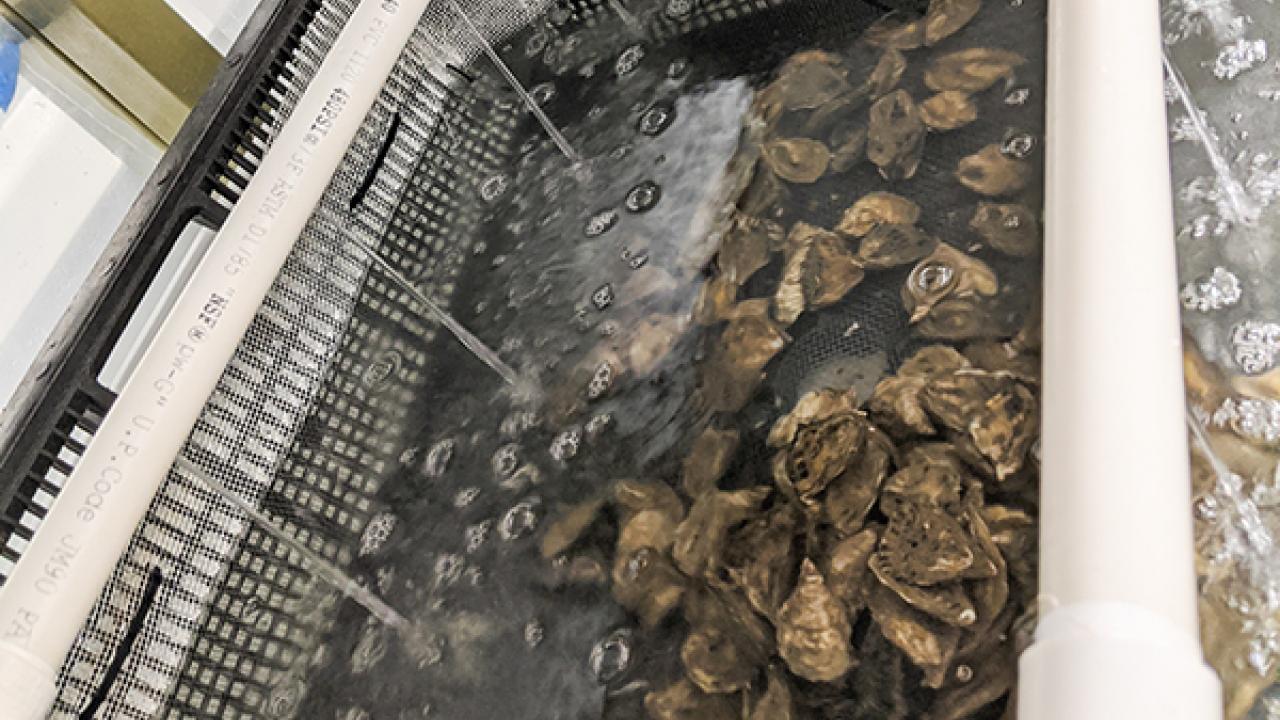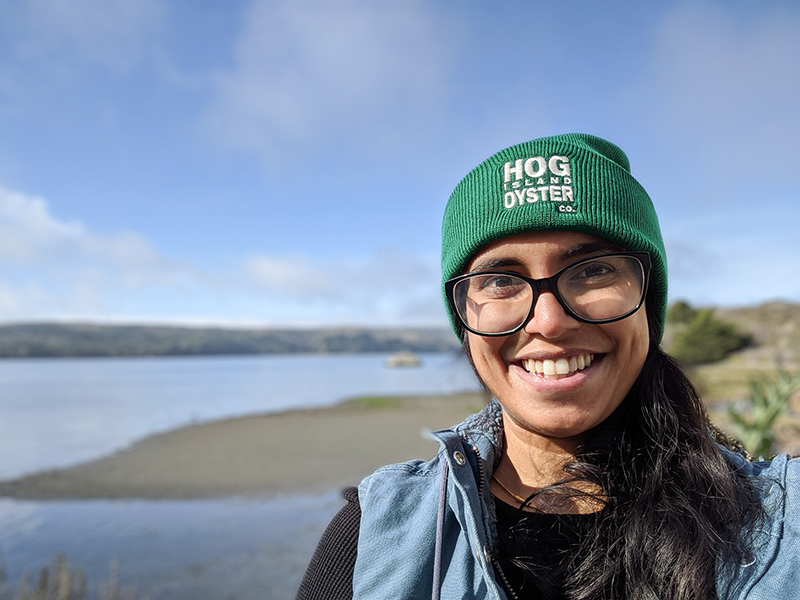
Warming oceans could mean bad news for oyster aquaculture
Highly prized as delicacies, oysters are farmed all over the world. In the US, they account for the highest volume of marine shellfish production, amounting to a total of 36.5 million pounds in 2018. However, as seawater temperatures rise due to global warming, oyster aquaculture will face obstacles and will likely need to reshape its practices to continue its success.
An oyster’s journey to a dinner plate begins on land at a hatchery, where breeding oysters produce larvae, which are then transferred to nurseries, also on land. The larvae develop into juveniles, and once they reach about 19 to 24 millimeters, they are moved to farms in brackish or marine waters, where they grow until they’re ready for the market and then consumption.

Because the juveniles develop in the ocean, they are vulnerable to the effects of climate change. Priya Shukla, a Ph.D. student at UC Davis, is currently studying the Pacific oyster (Crassostrea gigas), a globally farmed species that has experienced multiple mortality events. “In the seventies, researchers started documenting summer seed mortality,” Shukla explains. Seeds are the small, juvenile oysters. “Every summer, they would perish. And more recently, in the past 20 years, scientists have noticed that the oyster seed die-off is often associated with the outbreak of certain diseases.”
Key Takeaways
- As ocean temperatures rise, oysters farmed for human consumption are experiencing mortality events that may be driven by disease
- Consequently, the oyster aquaculture industry is facing challenges and will need to adapt to a changing ocean
- One possible solution is to train oysters to tolerate higher temperatures and thus, be more prepared for disease outbreaks
The ostreid herpesvirus (OsHV-1) is a primary suspect. Researchers first documented herpes infections in 1972 in the eastern oyster (Crassostrea virginica). Since then, several cases have been observed throughout the world. In 1991 and 1992, larval Pacific oysters exhibited symptoms in New Zealand and France, respectively. Though herpesvirus can affect oysters from all life stages, it is fatal for early juveniles. This poses a problem for growers, who are left without adult oysters to give to the market.
The heating of our planet can also exacerbate the situation, as research has indicated that the herpesvirus is associated with warming waters. “As you increase temperatures, you see that the viruses can replicate and that disease outbreaks accelerate,” says Shukla. “As we see warming conditions due to the changing climate, we might see that the virus gets more virulent, and that can be devastating for the oyster industry.”
For instance, in 2008 and 2009, the herpesvirus decimated up to 100 percent of oyster stocks in France, according to Shukla. And in Tomales Bay, California, it can devastate close to 40 percent.
Through her research, Shukla is hoping to find solutions. One possible answer is to train the oysters to respond differently to higher temperatures. “Can we expose these early life stage oysters to warmer conditions early on, before we put them out into the wild, so that they’re ready for these warm temperature outbreaks and therefore, ready for the disease outbreaks?” she asks.
Supporting Local Oyster Aquaculture
Priya Shukla is working with Hog Island Oyster Company and Tomales Bay Oyster Company as part of her research. If you're looking for a way to help support these businesses during the pandemic, Tomales Bay Oyster Company offers pick-up (with social distancing protocols) and Hog Island Oyster Company is delivering "meal kits"
To answer this question, Shukla will expose groups of young oysters to a varying number of temperature spikes then return them to the temperature they were originally at. She will then observe their responses to see if they’re improving at tolerating multiple temperature spikes. Are their growth rates increasing as the number of spikes increase? Are they producing more immune cells, or hemocytes, and therefore having better immune response? “Oysters in general are hardy animals,” says Shukla. “So I’m hoping that if you stress them out a little bit that makes them really strong and able to withstand future stresses.”
However, even if this works, there are further angles to consider. “From a grower’s perspective, you want to grow oysters in the most ideal conditions for rapid, high growth,” Shukla says. “But those conditions may not be what also makes them most immune to outbreaks of disease or increases in temperature.” Therefore, as our oceans warm, growers may have to compromise efficient growth to ensure that the juveniles survive.
Regardless, the aquaculture industry will likely need to adapt to a changing environment if oysters are to remain a reliable food source. With the help of scientists like Shukla though, the industry and its oysters are in good hands.
